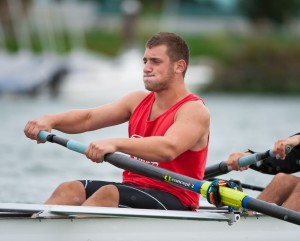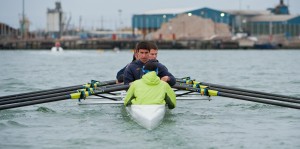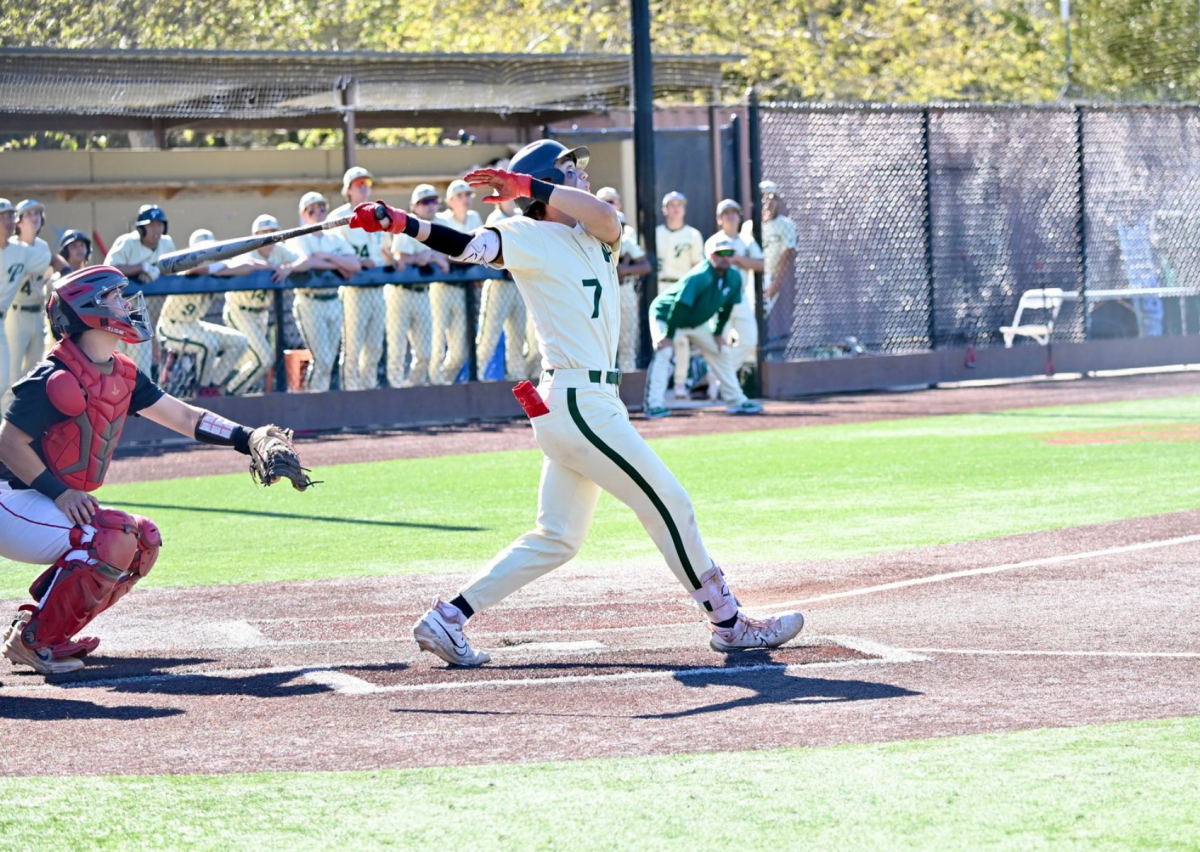“Power ten! Power ten!”
These words translate to “all or nothing” in the life of a crew member. “Power ten” is the coxswain’s (the person who steers the boat and directs the team) command at the most intense moment of the race, during the final stretch when rowers must decide mentally if they have it in them to give that final push to be the first to cross the finish line. Ten strokes, eight rowers, one boat.
Alec Fishman (‘13) has experienced firsthand the intensity of sore muscles, rushing adrenaline and only 500 meters left of focus to pull ahead to the finish line. Fishman has rowed for two years with the NorCal Rowing Club and has come to enjoy the sport despite many sacrifices that he has to make in order to attend practices. His squad trains six days a week, which includes five after school practices and one morning practice a week.
“On Mondays we have morning practice from 5-7a.m. and then I have to get to [Paly] jazz band which starts at 7:15 a.m.,” Fishman said.
While a rower’s biggest sacrifice is sleep, a cherished teenage pasttime, many describe the early rise as a rare occasion to take in the aesthetic appeal of nature that most people don’t get to experience.
“You see the most shooting stars you will ever see in your lifetime,” Palo Alto Rowing Club member Victoria Tse (‘12) said. “One time I saw eight during morning practice. I made a lot of wishes that day.”
Learning how to adjust to morning practices and the intense workouts are some of the struggles that many athletes face who have had to make the transition from a mainstream sport such as baseball or football to crew.
“The biggest obstacle is the physical and mental exhaustion,” NorCal crew member Luke Prioleau (‘12) said. “We do a lot of cross training like running and lifting, which is exhausting.”
In elementary school, aspiring athletes generally pick up sports like soccer and basketball and join youth programs such as the American Soccer Youth Organization (AYSO) and the Young Men’s Christian Organization (YMCA). While many athletes who participate in mainstream sports have been training from an early age, crew athletes generally develop their skills in just a few years.
“My coach was an Olympic rower in Athens and he won a National Championship three years after the first time he ever rowed,” Fishman said. “It doesn’t take that long to pick it up.”
Paly alumnus Ben Brown (‘11) walked onto Michigan University’s club crew following only two years of training in high school. After quitting football and baseball, Brown became accustomed to the extreme physical and mental toll that crew members experience. However, building strong relationships with teammates makes all of the difficulties of crew seem worthwhile.
“My favorite part of crew is the camaraderie that stems from going through hell with your teammates,” Brown said. “You gain respect for people when you know they are willing to sacrifice their bodies for you.”
 Having solid relationships with the members in his boat helped Brown and his teammates maintain the perfect rhythm that allowed them to win the National Championships last spring.
Having solid relationships with the members in his boat helped Brown and his teammates maintain the perfect rhythm that allowed them to win the National Championships last spring.
Rowers who aspire to participate in crew at the college level spend 15 hours a week training in high school to work towards this goal.
Many Paly rowers are part of either the NorCal rowing club or the Palo Alto Rowing Club which rows two, four and eight-person boats. In each boat there is an even amount of people with each member responsible for one oar. The four-man boat and the eight-man boat have coxswains to direct the boat.
Collete Lucas-Conwell (‘13), a coxswain, began rowing four years ago and is well suited for this position due to her size and commanding voice.
“When I started crew in 8th grade I was 4’9’’ so I couldn’t do a lot of sports,” Lucas-Conwell said. “I had given up on other sports because everyone was so big and tall and I was pretty small.”
Her role as a “mini-coach” is to instruct the other members in the boat and to steer the boat because she is the only one who can see the course in front of her. The coxswain also shouts out the stroke rate, which they obtain via a cox box. The coxswain’s commands help the rowers stay on rhythm and gage their strokes per minute so that they can increase their speed.
Afternoon practices are generally spent doing cardio and weight training to improve speed and endurance while morning practices are devoted to practicing rhythm on the water.
“We go on rowing machines and five to seven mile runs,” Tse said. “A lot people think crew is only about upper body. It’s also a lot about legs because you’re pushing off with your shoes.”
However, one of the hardest aspects of crew is learning how to push off at the exact same time as the other members of the boat. Rowing completely in sync with one another is the most important component that factors into winning a race.
In the fall, races are generally 5k or 6k, while in the spring races consist of short distance sprints of about 2k. 5k races translate to a little over 12 laps around the track. These races require strength, endurance, and perseverance.
Recently, Prioleau and his Norcal crew team participated in the “Head of Charles Regatta” in Boston.
 “There were about 9000 people racing in it and over 300,000 fans,” Prioleau said. “It’s one of the biggest sporting events in the nation and just being in Boston with so many people in the rowing community is a lot of fun.”
“There were about 9000 people racing in it and over 300,000 fans,” Prioleau said. “It’s one of the biggest sporting events in the nation and just being in Boston with so many people in the rowing community is a lot of fun.”
These regattas require intense concentration and the confidence that the other members in the boat will fulfill their role. In crew, if one member of the team is off-rhythm with another, it can sabotage the entire team’s chances of winning the race.
“[Crew] really expresses the power of teamwork,” Fishman said. “For example, if you’re a fan of a sport you know key players and the stars of the team. In crew there is no star of the team. You are one boat and it’s all a machine working together. Crew is the definition of a team sport.”
If all of the boat members concentrate on emulating the person in front of them and staying on rhythm, they can experience the rewarding feeling of being the first boat to cross the finish line.
“Last year we won our race by three or four boat lengths because the entire time we were out ahead,” Fishman said. “If you’re winning and you’re out ahead you’re looking at who you’re beating because you are facing backwards the entire race and you’re knowing that they can’t catch up with you.”
Whether it’s waking up before sunrise or enduring grueling practices, crew members demonstrate the power of teamwork and the beauty of eight people working equally towards one common goal.







